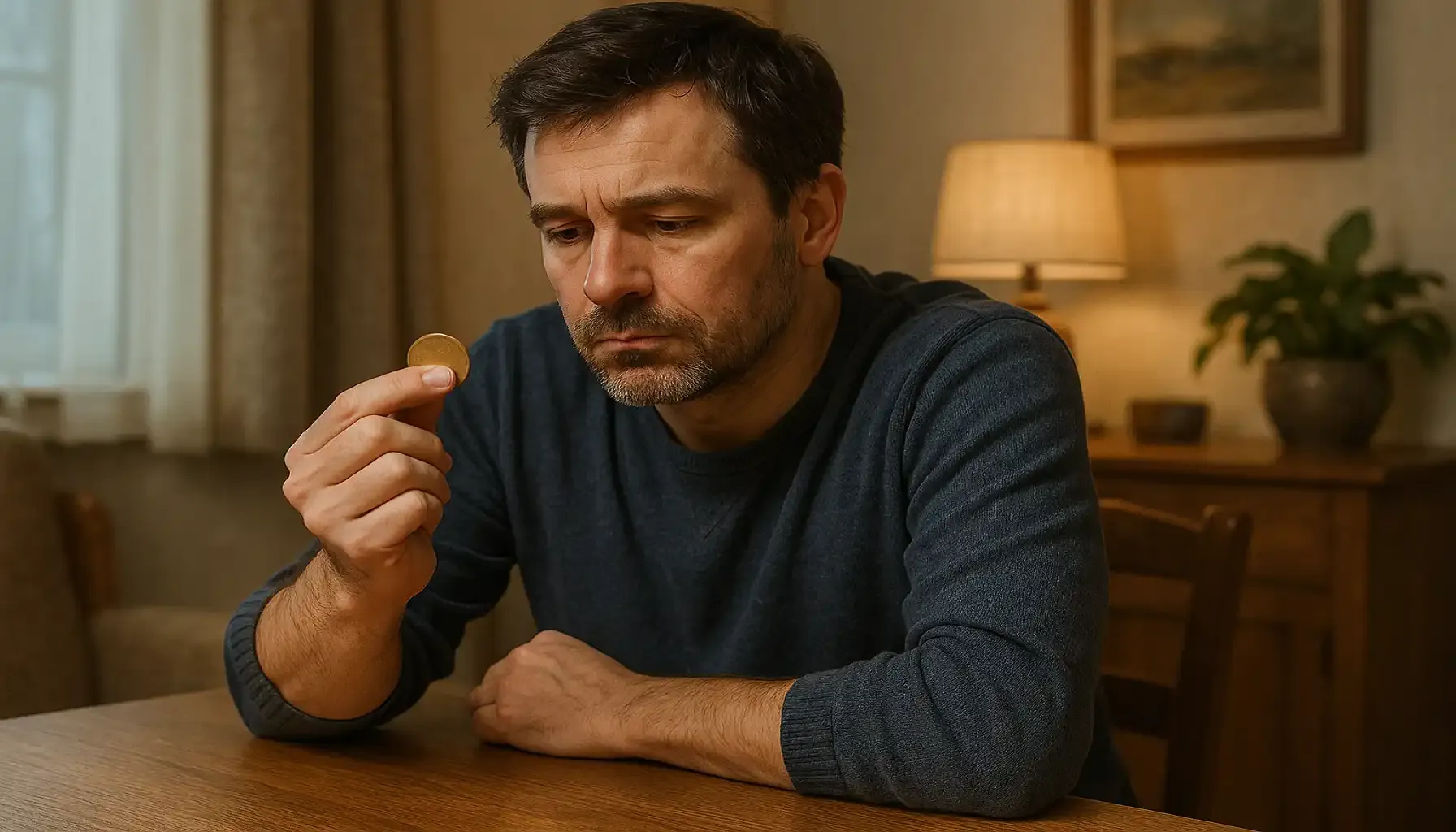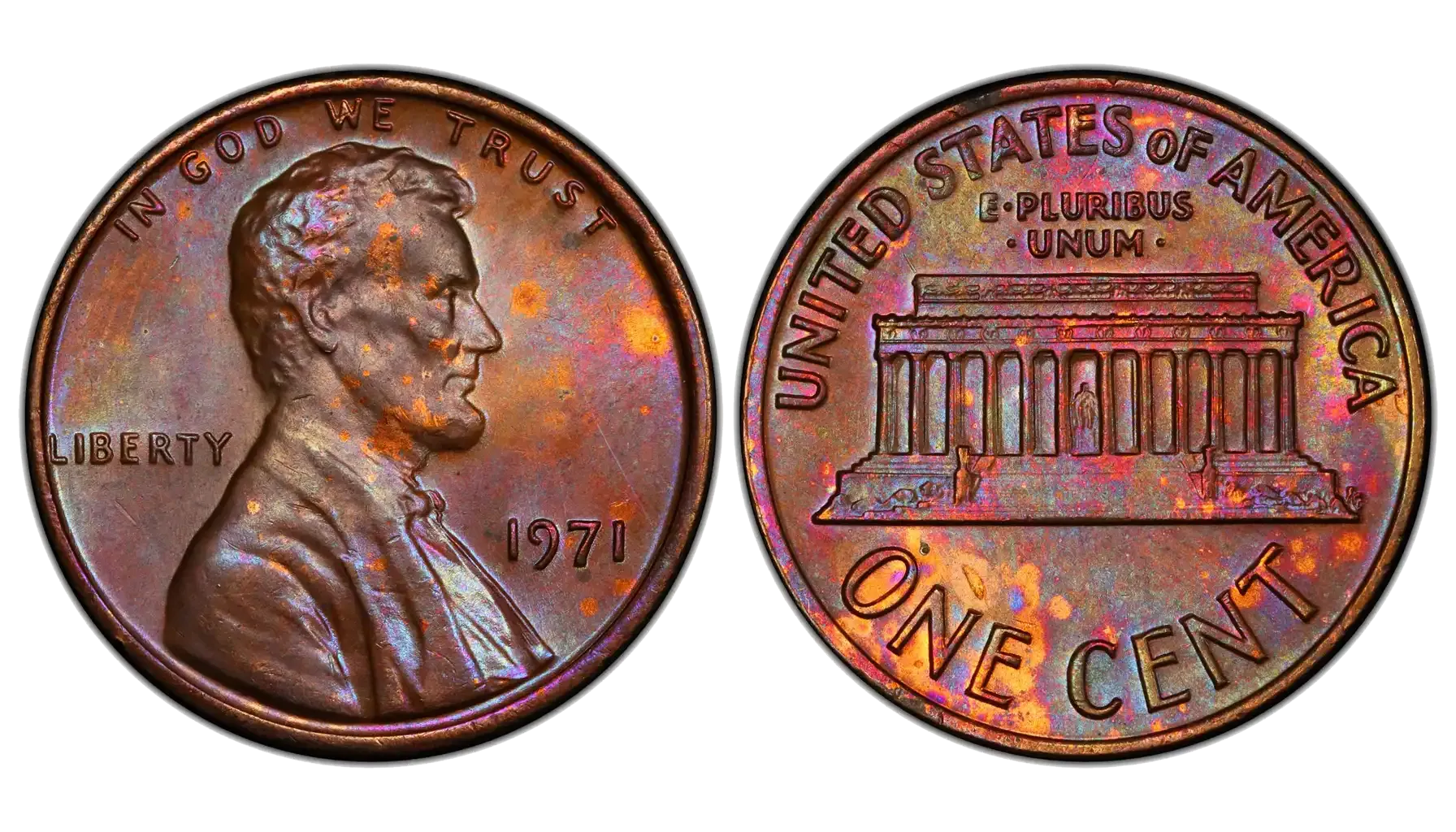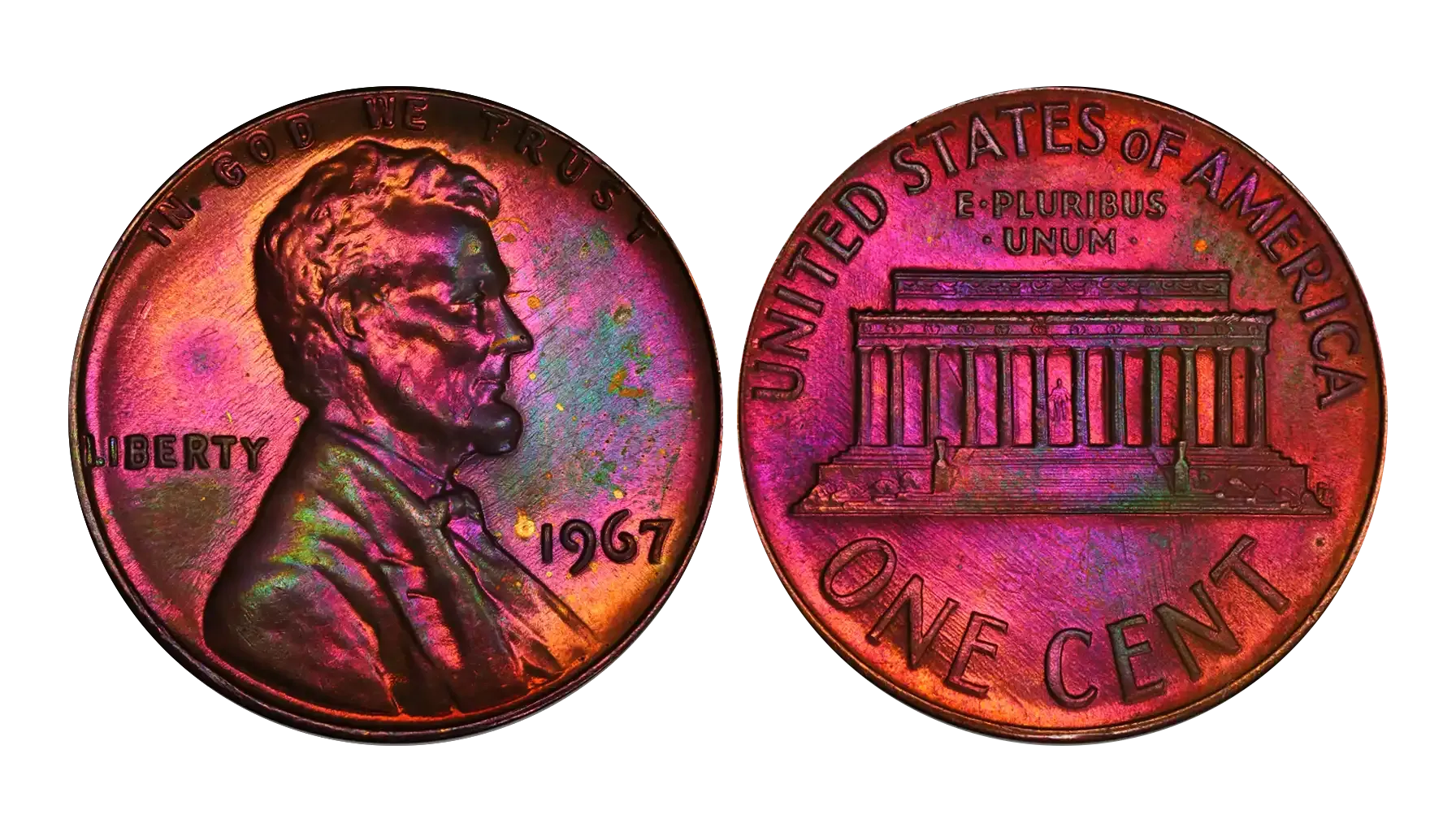Contents:
- A Brief Overview of the 1970 Lincoln Cent
- Identifying Mint Marks
- 1970 S Penny Small Date VS Large Date
- Understanding the Value of Your 1970 Penny
- Characteristics of Each 1970 Lincoln Penny Variety
- Common Errors and Varieties
- The Myth of the 1970 Silver Penny
- Tips for Collectors
- Conclusion
- Related Coin Value Guides:
You've probably seen the 1970 Lincoln Penny, but perhaps you haven't thought about the fact that some people ask for more than one cent for this coin.
For many, this is not just a piece of zinc with a copper coating, but a potential item that is just waiting to be discovered in old coin cans or in inherited collections.
It’s not a secret that to effectively identify coins, one must carefully examine their mint mark, date, and any potential errors.
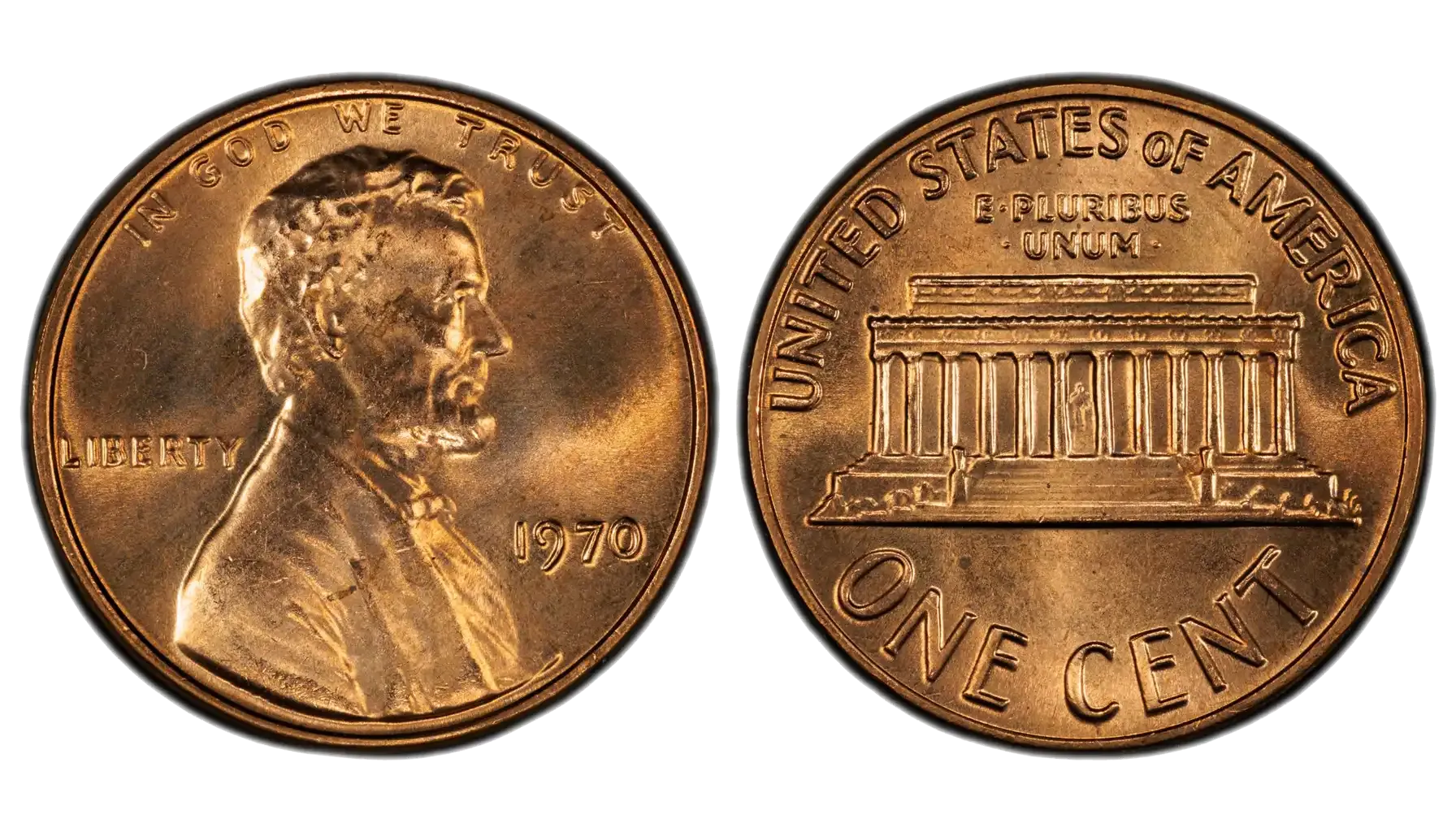
A Brief Overview of the 1970 Lincoln Cent
Millions of these pennies were struck at various United States Mint facilities, serving their primary purpose as everyday currency. However, certain production anomalies and intentional die changes in 1970 created distinct varieties that are highly sought after today.
It is important to note that this article focuses exclusively on the 1970 Lincoln Penny, so information regarding the 1970 25 cent coin value is outside its scope.
Identifying Mint Marks
To accurately determine the potential value of your 1970 Lincoln penny, the initial and most crucial step involves locating its mint mark. This small letter, found just below the date on the obverse side of the coin, indicates the specific minting facility where the coin was produced.
"S" for San Francisco: Coins bearing the "S" mint mark were struck at the San Francisco Mint. These often include proof strikes, which are specially produced coins with a higher quality finish for collectors, as well as regular business strike coins. The San Francisco Mint typically produced fewer coins than other facilities, making some of its issues potentially rarer.
"D" for Denver: Pennies marked with a "D" originated from the Denver Mint. This facility was known for its high-volume production, meaning that 1970 D penny value examples are generally quite common in circulation.
No Mint Mark for Philadelphia: If your 1970 penny lacks a mint mark, it was produced at the Philadelphia Mint. Like the Denver issues, coins from Philadelphia were minted in vast quantities and are considered common.
Therefore, the 1970 no mint mark penny value for circulated examples is usually minimal, often just face value or slightly more.
1970 S Penny Small Date VS Large Date
For collectors, distinguishing between the 1970-S Small Date and Large Date varieties is crucial due to their significant difference in value. Here's a concise guide to tell them apart:
1970-S Small Date: The top of the "7" in the date is level with the tops of the "1" and "9." The "0" is rounder. Crucially, the "LIBERTY" inscription often appears weak or "mushy." This is the rarer and more valuable variety.
1970-S Large Date: The top of the "7" in the date is noticeably lower than the tops of the "1" and "9." The "0" is more elongated or oval-shaped. The "LIBERTY" inscription is typically strong and well-defined. This is the more common variety.
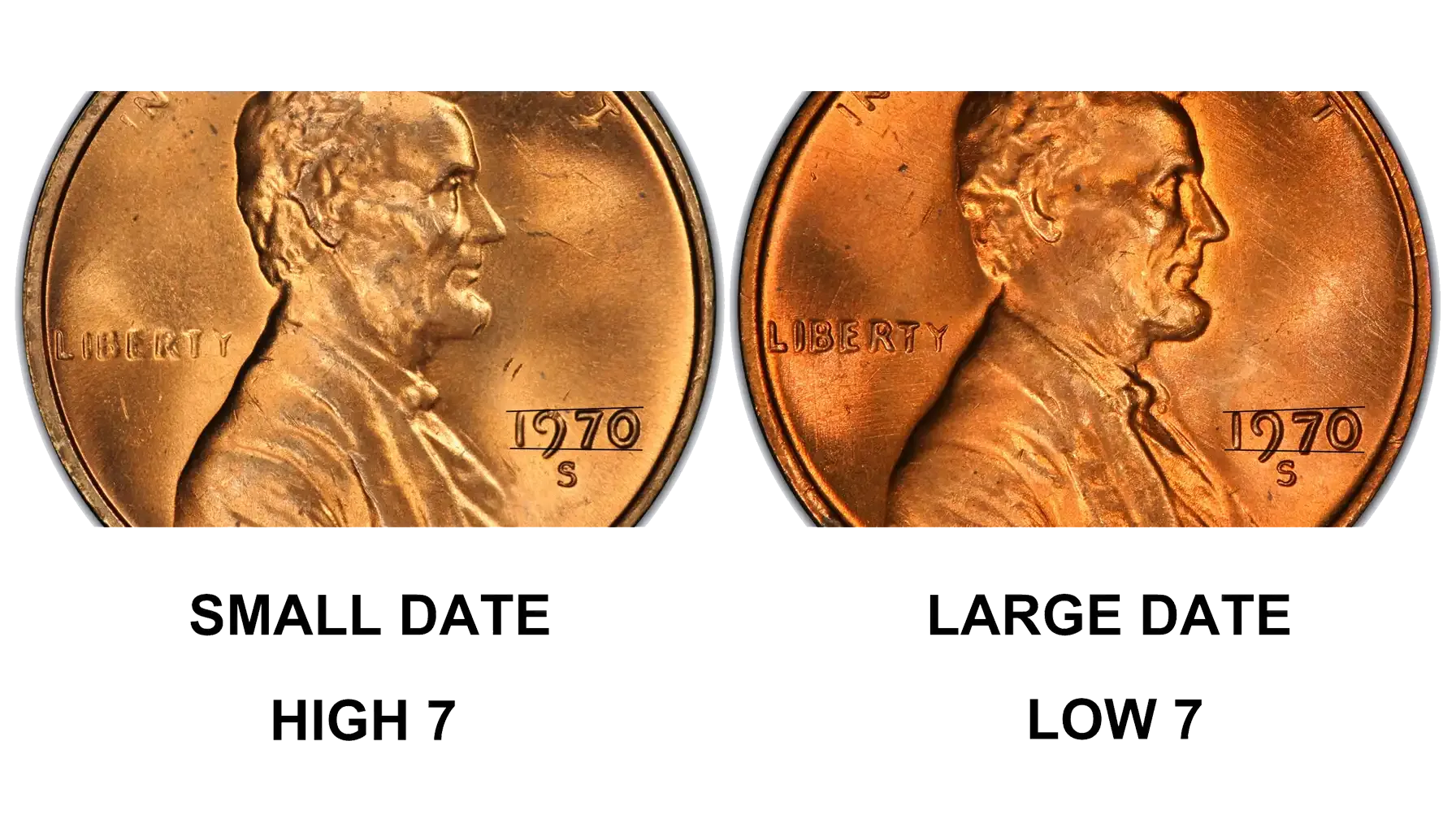
For comparison, the 1970-s penny large date value is considerably lower, reflecting its higher mintage and commonality.
Understanding the Value of Your 1970 Penny
The value of a 1970 Lincoln penny can fluctuate dramatically based on its mint mark, its specific variety (small or large date), and its overall condition. While many circulated examples are worth little more than their face value, certain rare varieties and high-grade specimens can fetch significant sums.
If you are asking “how much is a 1970 penny worth”, the answer depends heavily on these factors.
Name | Approximate Value |
1970 (No Mint Mark) | $0.05 - $15.00 |
1970-D (Denver Mint) | $0.05 - $15.00 |
1970-S Large Date (San Francisco) | $0.10 - $30.00 |
1970-S Small Date (San Francisco) | $20.00 - $10,000.00+ |
1970-S Small Date (Proof) | Proof: $300.00 - $20,000.00+ |
As you can see, the 1970 S penny value for the small date is in a league of its own, making it a highly desirable find. Even a circulated example can be worth a substantial amount.
Characteristics of Each 1970 Lincoln Penny Variety
While earlier Lincoln cents, like 1928 Wheat Penny, have their own special features — the value range for coins from 1970 to 1979 penny value generally follows similar patterns, with specific key dates and errors.
1970 (No Mint Mark - Philadelphia)
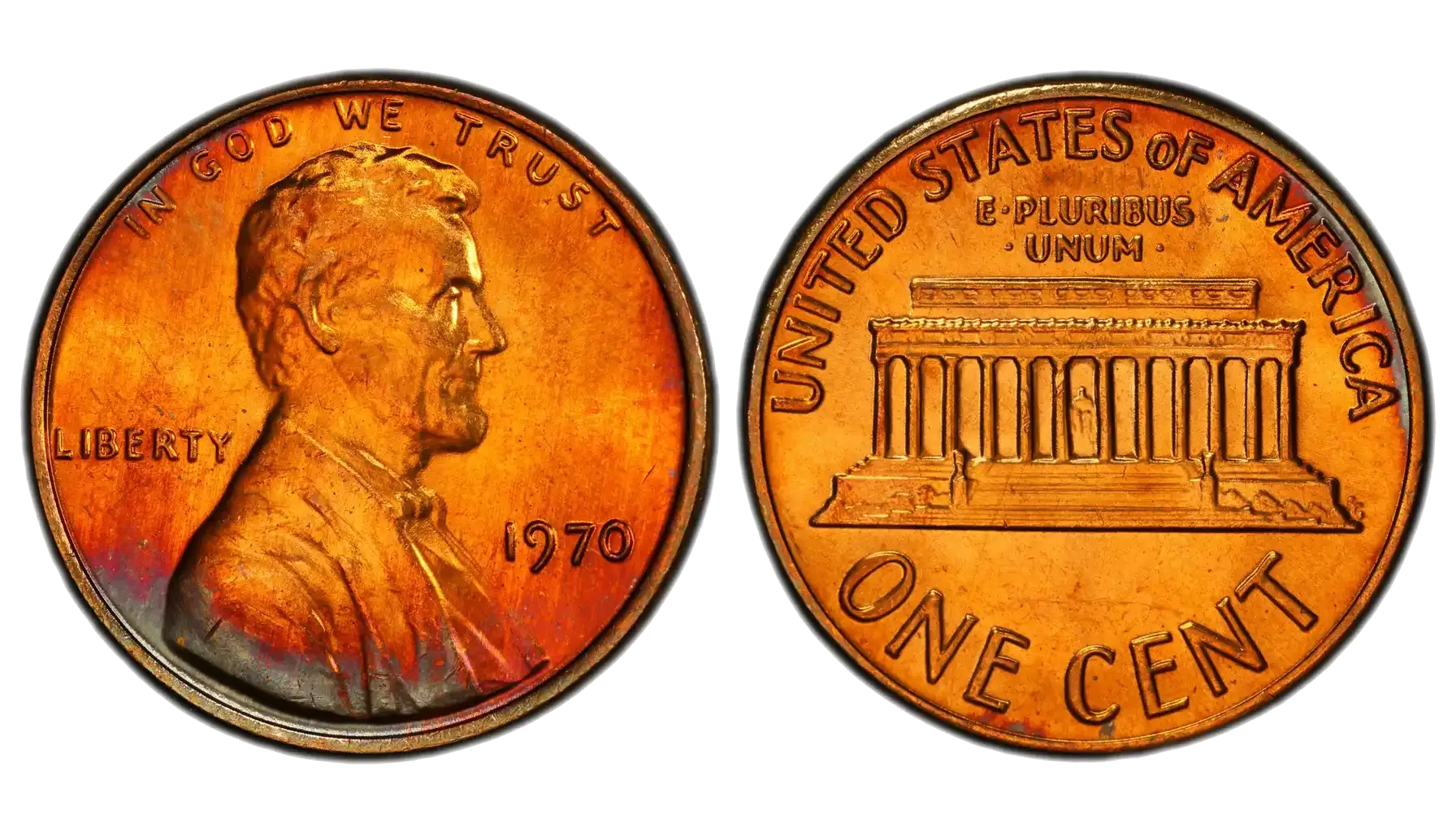
Mintage: 1,898,315,000
Weight: 3.11 grams
Diameter: 19.00 mm
Composition: 95% Copper, 5% Zinc
Auction Record: Varies, generally low for circulation. The 1970 penny no mint mark value is typically low for circulated examples.
1970-D (Denver Mint)
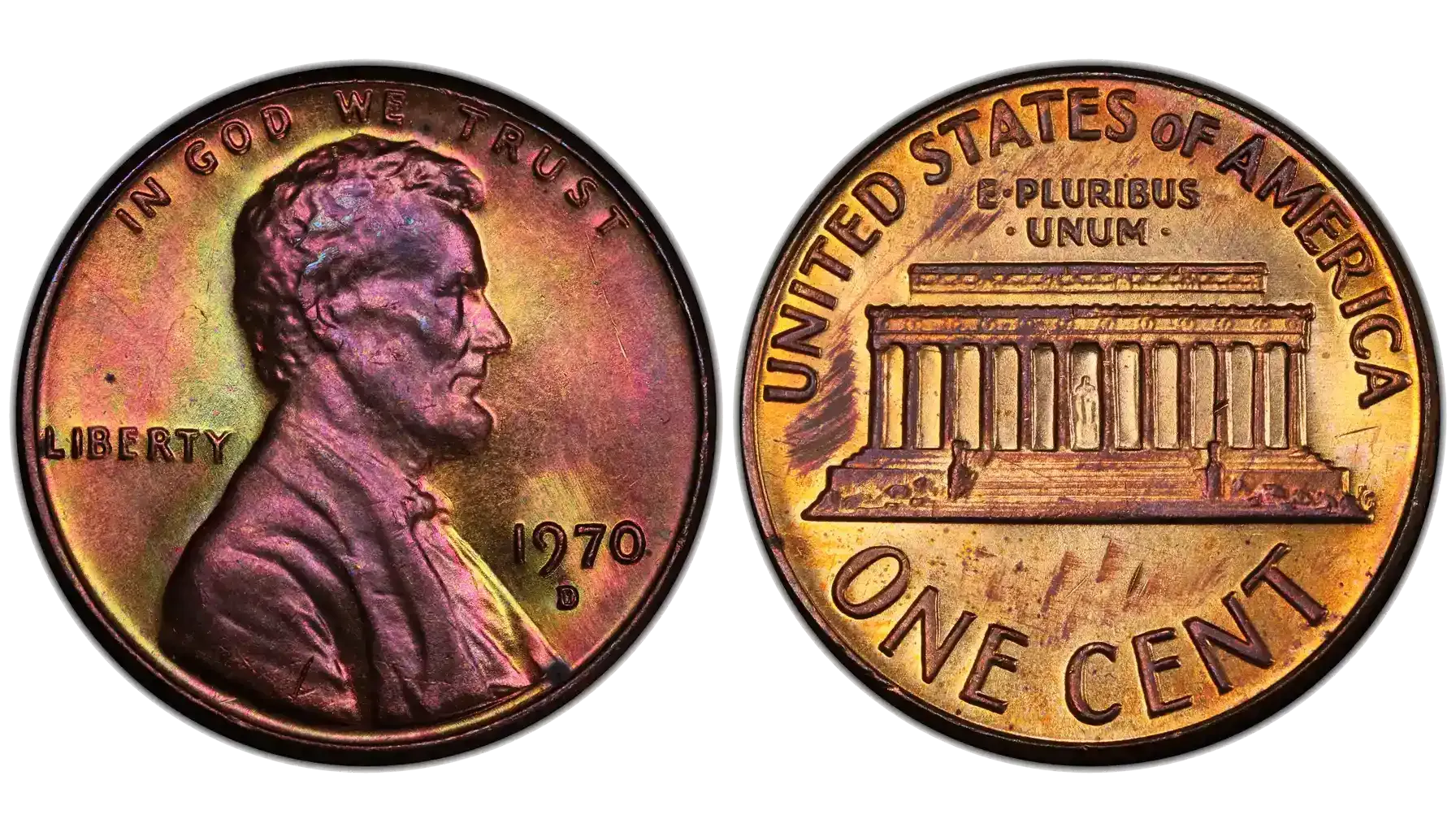
Mintage: 2,891,438,900
Weight: 3.11 grams
Diameter: 19.00 mm
Composition: 95% Copper, 5% Zinc
Auction Record: $2,820 (MS67+RD, 2016) The 1970 penny D is a common addition to collections.
1970-S Large Date (San Francisco Mint)
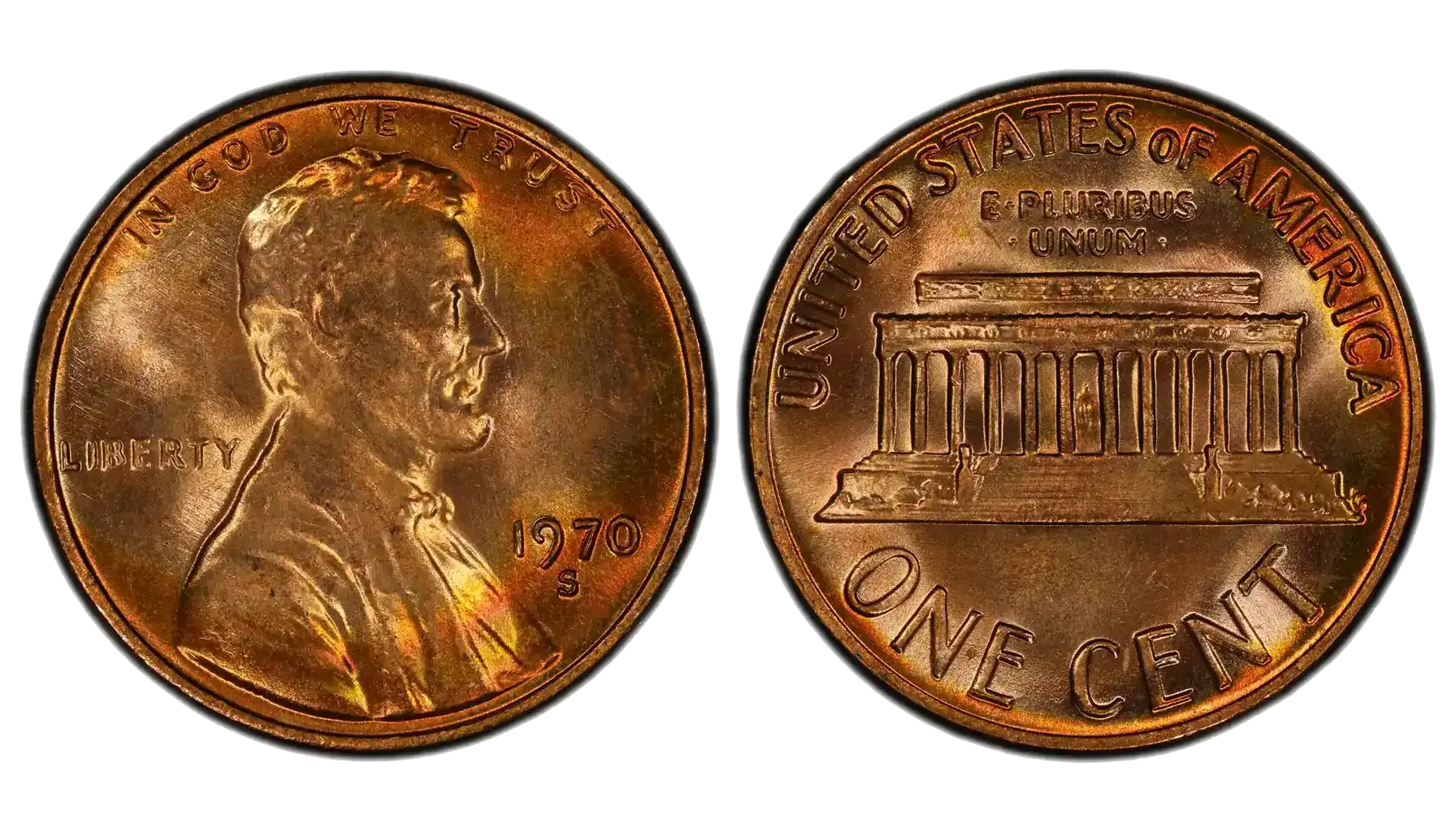
Mintage: 690,560,004
Weight: 3.11 grams
Diameter: 19.00 mm
Composition: 95% Copper, 5% Zinc
Auction Record: $1,500 (MS67+RD, 2019) Its 1970 S penny large date value is modest.
1970-S Small Date (San Francisco Mint)
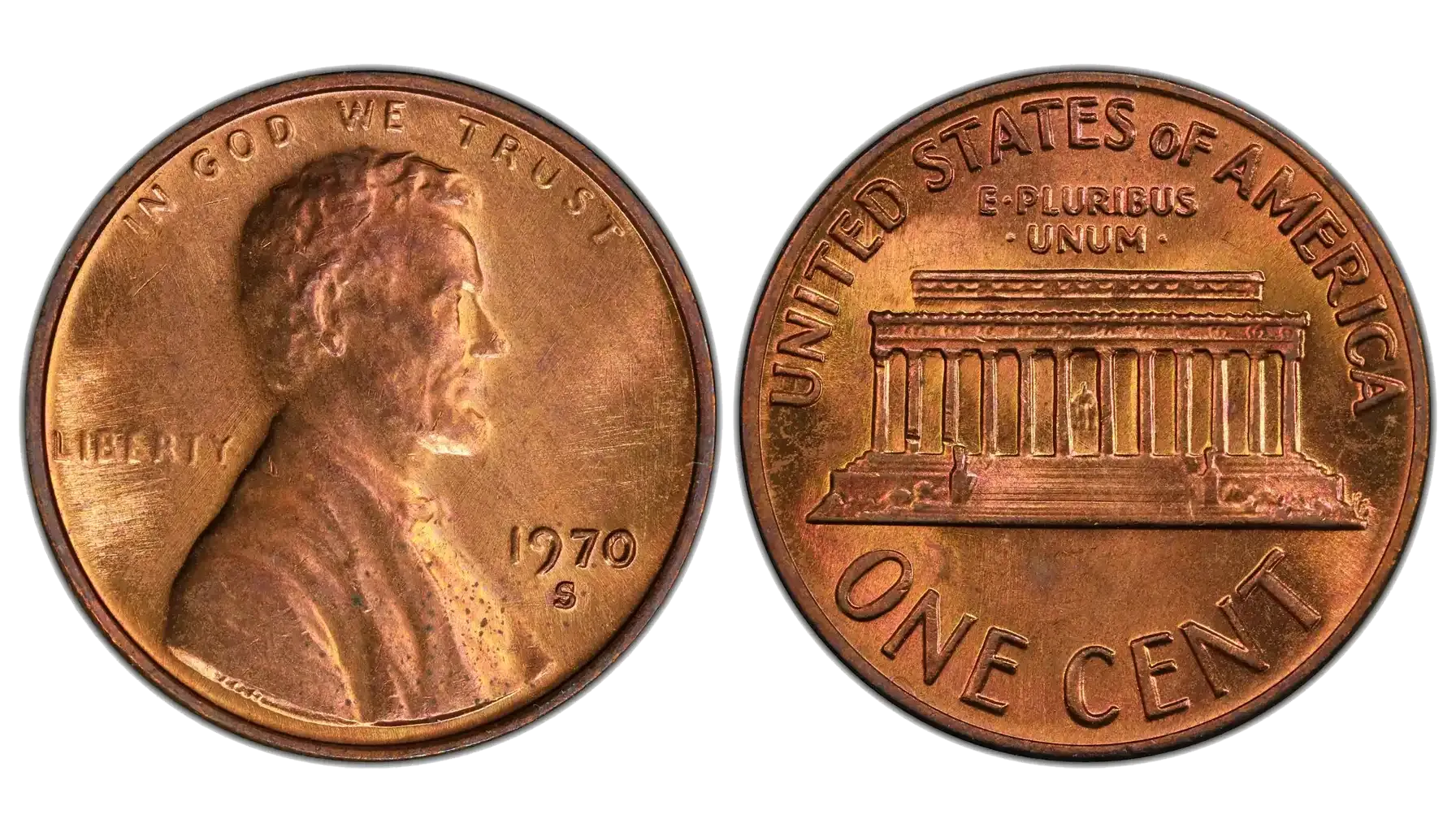
Mintage: Significantly lower than large date (exact number unknown)
Weight: 3.11 grams
Diameter: 19.00 mm
Composition: 95% Copper, 5% Zinc
Auction Record: $2,464 (MS67, 2008) The 1970 S small date penny value is exceptionally high.
1970-S Small Date (Proof)
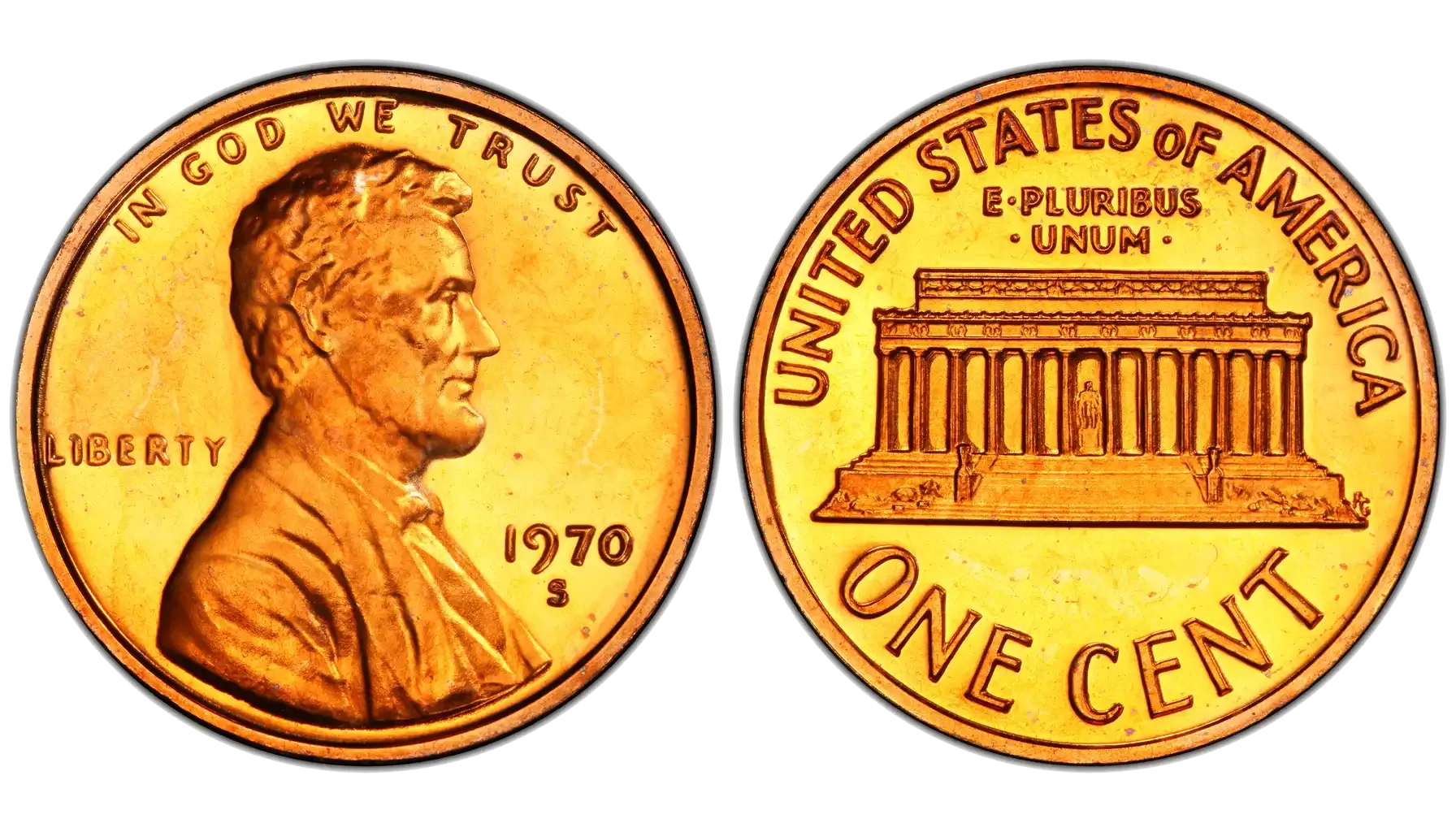
Mintage: 2,632,810
Weight: 3.11 grams
Diameter: 19.00 mm
Composition: 95% Copper, 5% Zinc
Auction Record: $18,400 (PR69, 2005) The 1970-s small date penny value for these proof examples is among the highest.
Common Errors and Varieties
Each numismat knows that errors on coins make it more valuable.
One of the most talked-about errors is the 1970 Floating Roof penny. This refers to a specific type of die anomaly found on the reverse side of the coin, where the roof of the Lincoln Memorial appears to be partially detached or "floating" above the columns. This effect is subtle and requires close examination, often with magnification, to confirm.
Similarly, a general 1970 penny error list with pictures would provide visual examples of various errors across all mints.
Doubled Die Obverse (DDO)
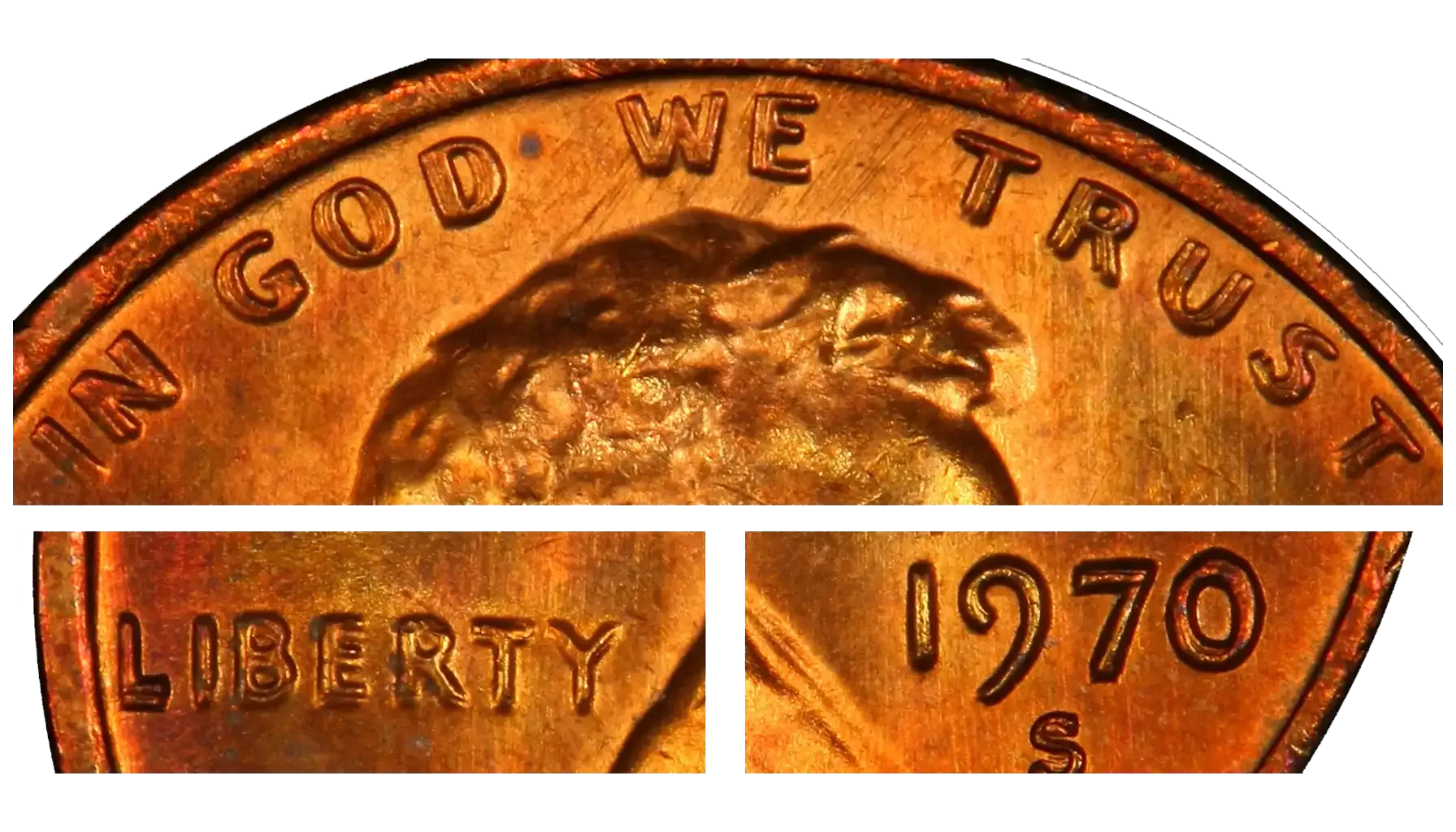
This occurs when the die used to strike the coin has a slight misalignment during the hubbing process, resulting in a doubled image of the date, lettering (especially "LIBERTY" and "IN GOD WE TRUST"), or Lincoln's features. A comprehensive 1970-s penny error list would certainly feature any known doubled die varieties from that mint.
Off-Center Strikes
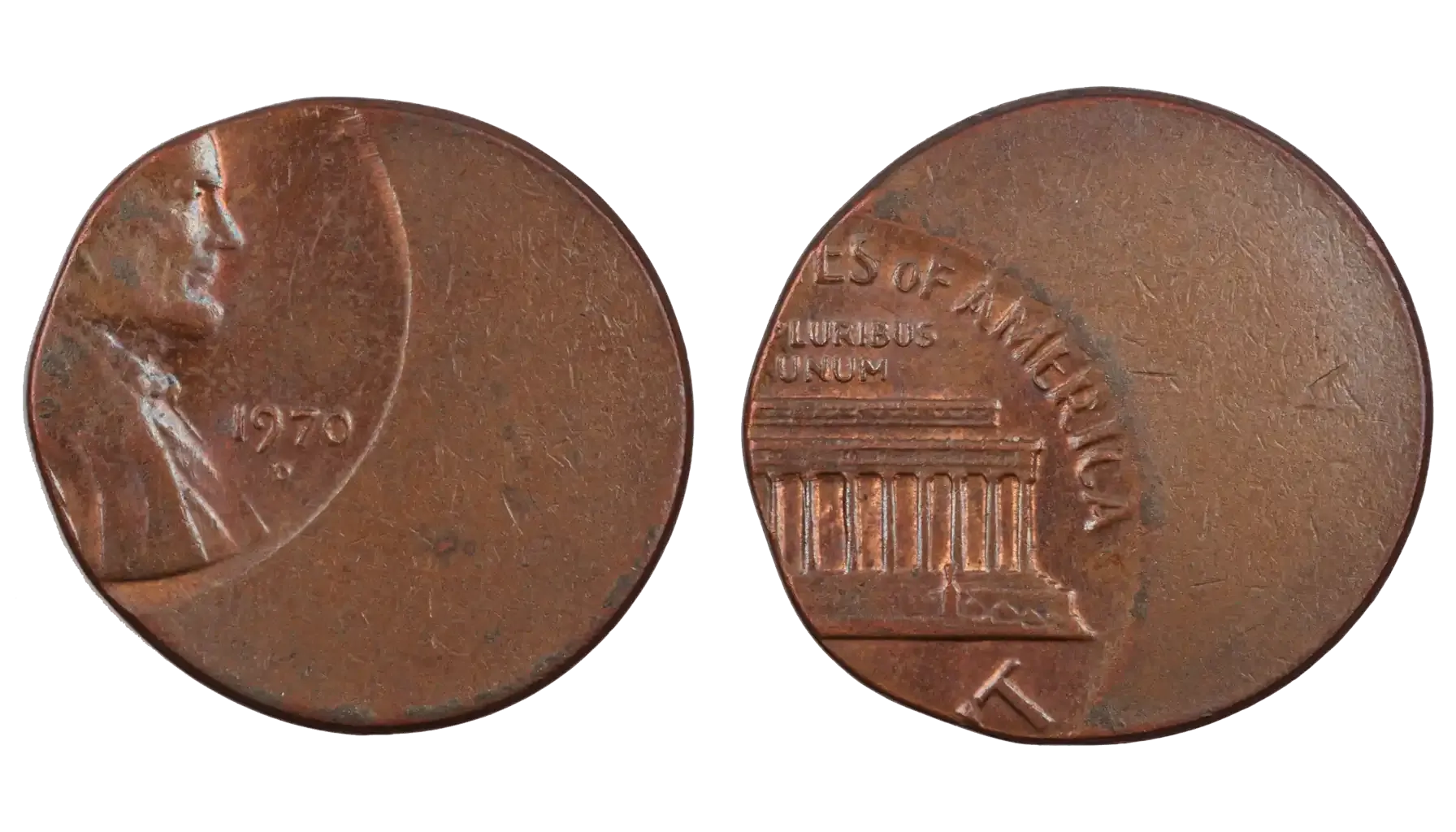
These errors occur when the coin blank is not perfectly centered within the coining press, causing part of the design to be missing and a crescent of blank planchet to be visible. The degree of off-centerness determines its value.
Cud Errors
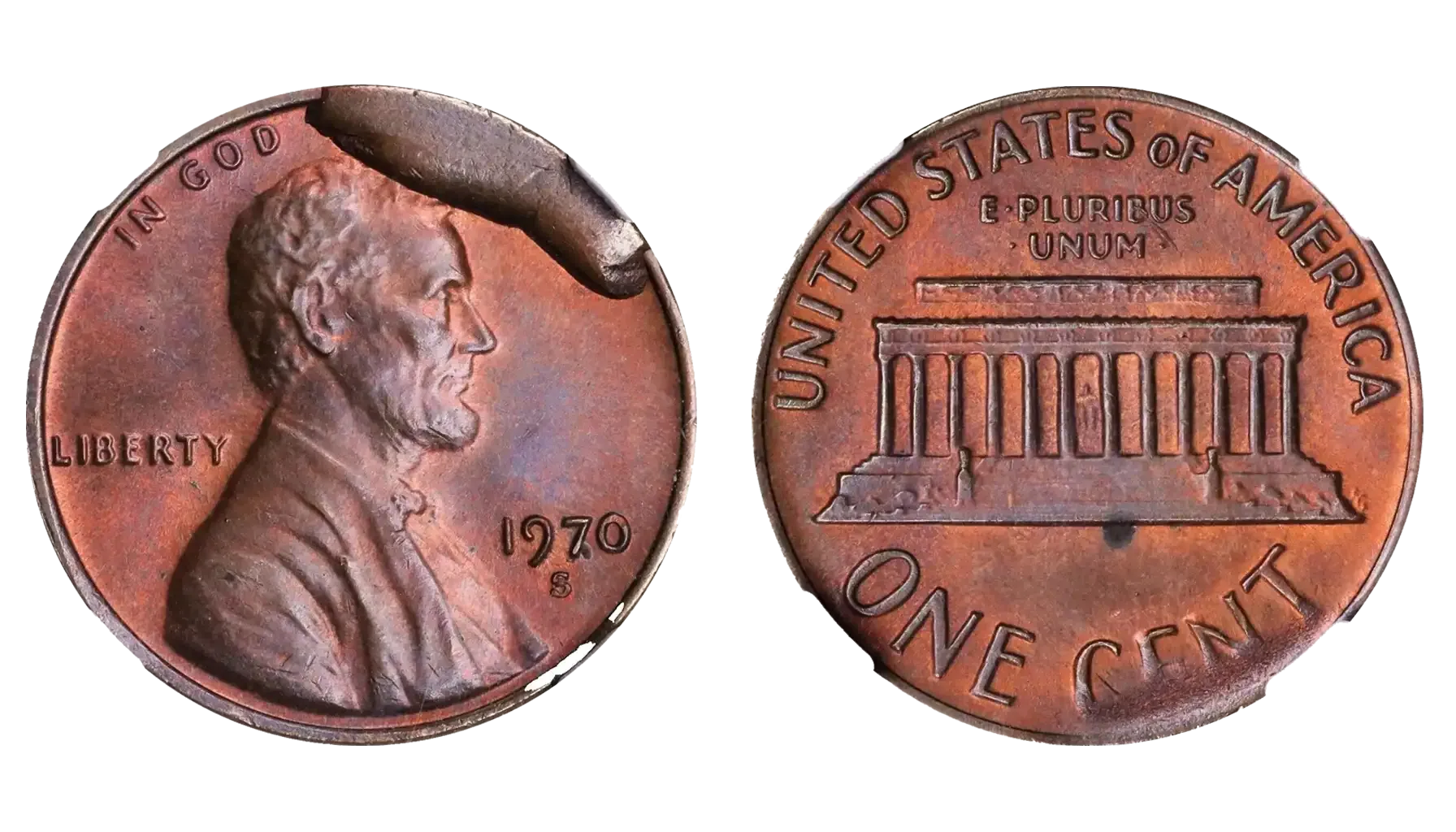
A cud is a raised, unengraved blob of metal on the coin's surface, resulting from a piece of the die breaking off at its edge. If it is a 1970 S penny Floating Roof - the price will be very high.
Struck Through Errors
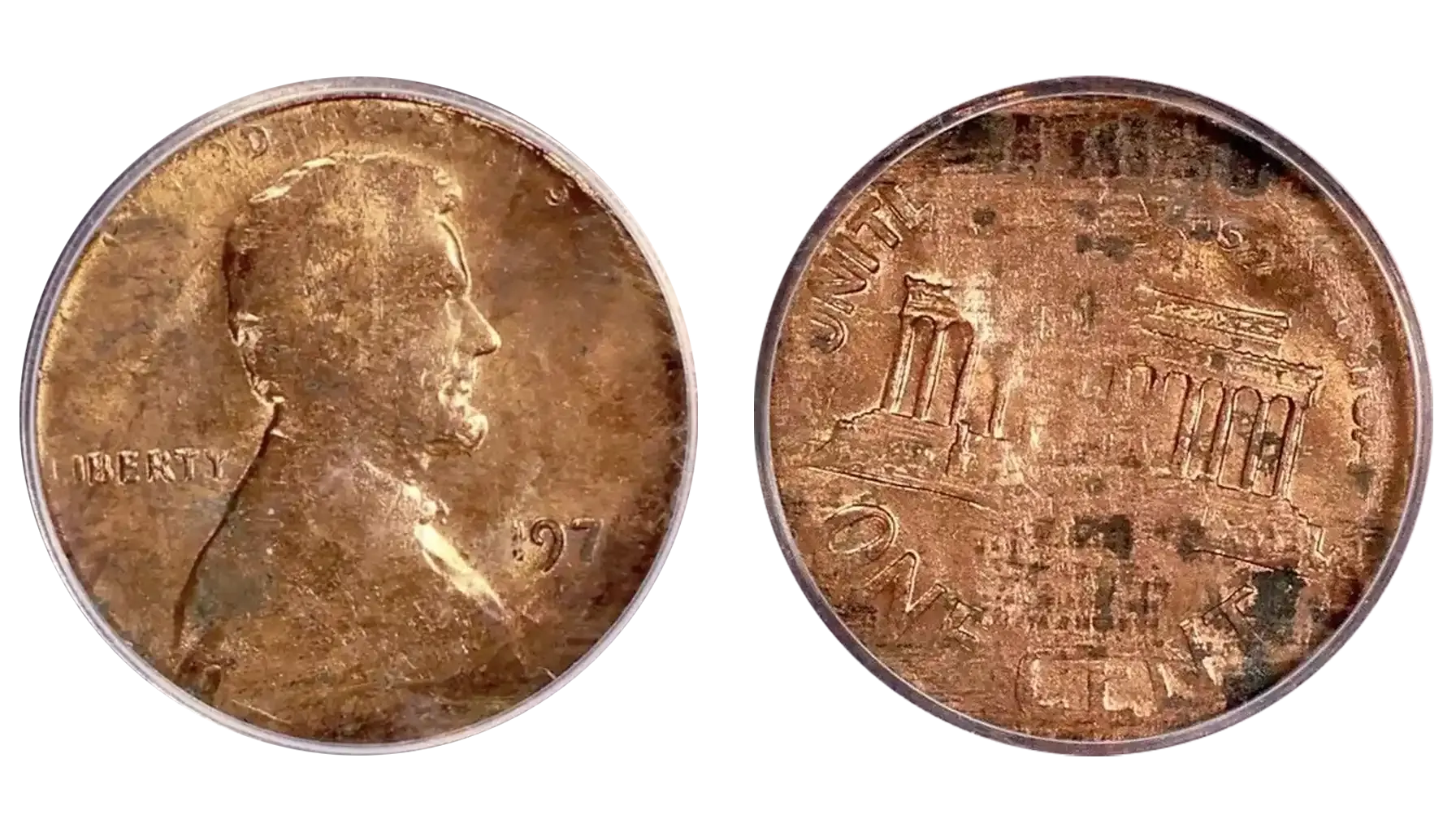
These happen when a foreign object (like grease, cloth, or another piece of metal) gets between the die and the planchet during striking, leaving an impression on the coin that influences on 1970 penny value no mint mark.
Floating Roof
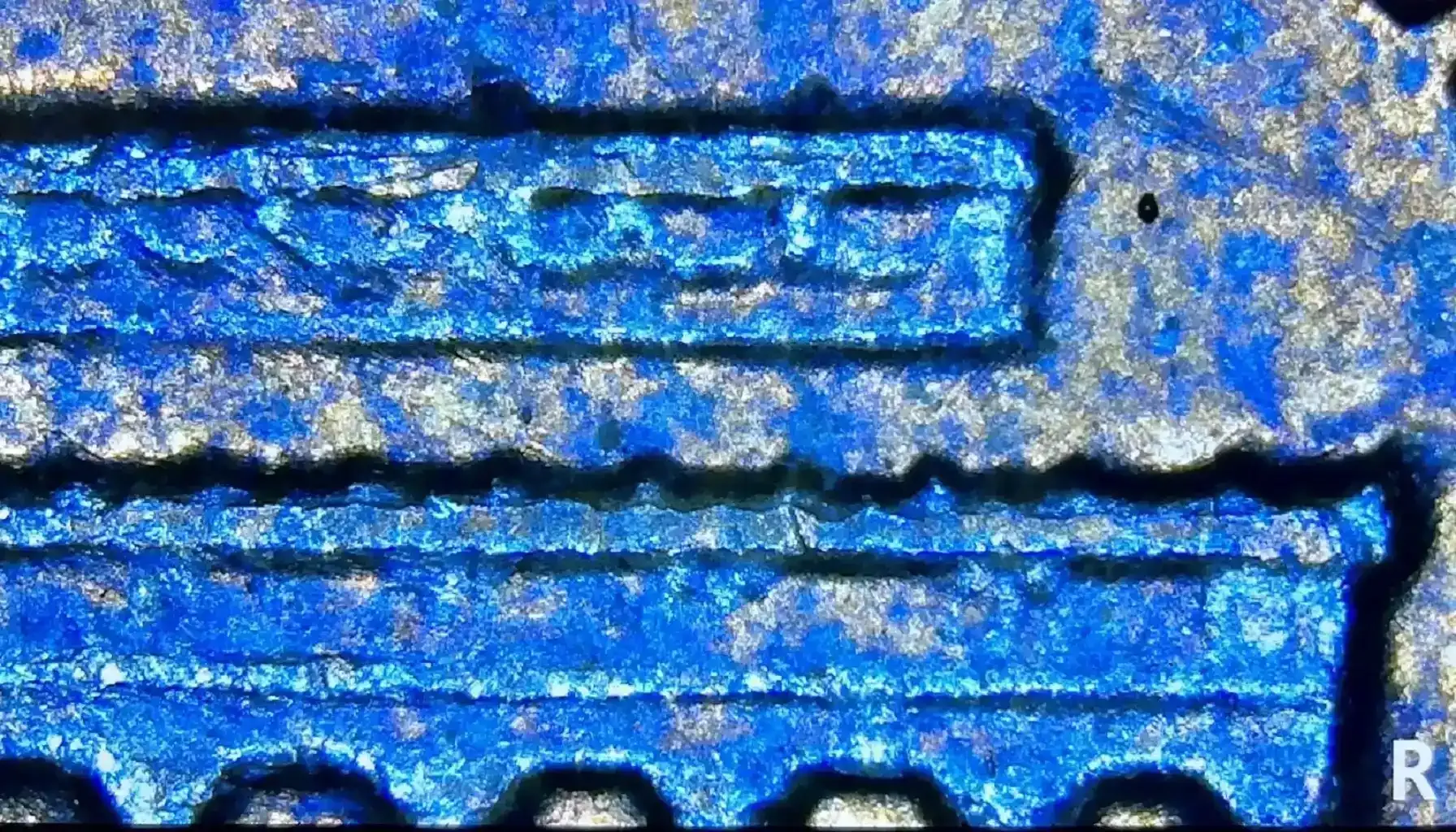
A specific die anomaly on the reverse, where the Lincoln Memorial's roof appears detached. The rarest one is a 1970 D penny Floating Roof.
For those specifically interested in issues from the Denver Mint, searching for a 1970 D penny error list with pictures can help in identifying specific anomalies.
The Myth of the 1970 Silver Penny
A common misconception among new collectors is the existence of a 1970 silver penny. It is crucial to clarify that no regular issue 1970 Lincoln pennies were struck in silver.
The last silver cents were produced in 1943 during World War II (steel cents) and before that, bronze.
Any penny from 1970 that appears silver is almost certainly a result of post-mint alteration, such as plating, or environmental toning, not original minting. The standard composition for 1970 Lincoln cent was copper-plated zinc.
Tips for Collectors
When you believe you have found a potentially valuable 1970 penny, especially a small date or an error coin, careful handling and further research are paramount.
Consider these essential tips:
Condition: The preservation of a coin's original features and luster directly correlates with its value. Even minor scratches, dents, or cleaning attempts can drastically reduce its worth.
Uncirculated coins, particularly those graded MS-65 or higher, command the highest prices due to their pristine condition and original mint luster.
Professional Grading: For significant finds, such as a high-grade 1970-s small date penny for sale, it is highly recommended to have the coin authenticated and graded by a reputable third-party grading service.
Organizations like PCGS, NGC or apps like Coin ID Scanner provide objective assessments of a coin's condition and authenticity, which is crucial for maximizing its market value and ensuring buyer confidence.
Continuous Research: The coin market is dynamic. Always cross-reference your findings with recent auction results, reputable dealer listings, and up-to-date price guides.
Conclusion
In conclusion, the 1970 Lincoln penny continues to be a captivating subject for coin collectors worldwide. While millions were produced, the existence of the 1970-s penny small and large date and various intriguing errors elevates this common coin to a status of significant numismatic interest.

